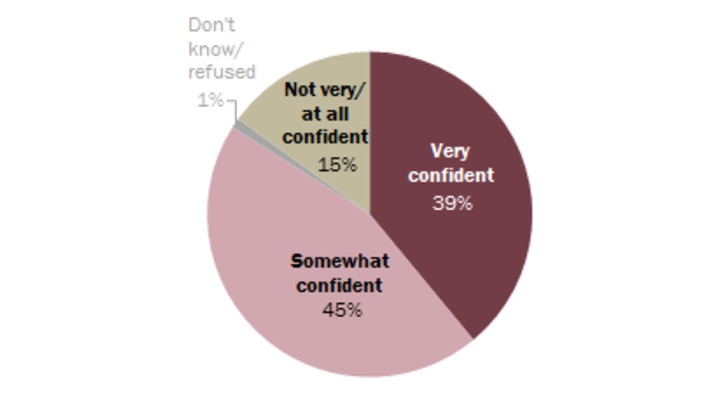
It has been an interesting start to the new year. Donald Trump is president, and fake news is a widely discussed phenomenon.
Although the exact definition of “fake news” has been severely distorted as people (including Trump himself) have hurled the term as an insult toward anyone they simply disagree with, data show that it remains a popular topic internationally. Since the presidential election, coverage of fake news has increased as reporters tried to explain why people who primarily got their news through social platforms couldn’t tell when they were sharing false stories, and how automated ad buying enabled the fake-news ecosystem.
“As reporters uncovered the sources of many of the fake-news stories, the global nature of programmatic selling and buying was revealed,” said Forrester analyst Susan Bidel.
Media coverage
For a few months the press has extensively covered fake news. Brandwatch found that since the beginning of October, there have been about 54,000 stories with “fake news” in the headline. As the chart below shows, the stories began coming out in waves after the election.
A MediaMath spokesperson said that awareness of fake news increased around the election because fake news was pushed out to confuse voters and influence the outcome of the election, when previously fake news had been relegated to fringe websites and distributed in lower quantity.

International coverage
The press coverage of fake news has extended beyond U.S. borders. Brandwatch data track only activity in English. But outside the U.S., there were about 10,000 stories with “fake news” in the headline since October. The U.K. had the most stories, with about 2,000.
“This is a global issue,” Bidel said. “Fake news will be a problem wherever fake-news generators can make money.”

User confidence
Despite all the reports of people being fooled by false stories, a recent Pew report showed the majority of respondents were confident in their ability to detect fake news. But that confidence is often misplaced.

Social platforms
There is plenty of blame to go around when it comes to misleading content. But the role of social media in facilitating the spread of misinformation cannot be overlooked. As BuzzFeed reported, bogus stories were shared more frequently after Facebook altered its algorithm to emphasize friends’ posts over publishers’.

Even more damning, a survey from BuzzFeed and Ipsos Public Affairs found that people who use Facebook as their primary news source believed false headlines 83 percent of the time. After initially denying its role in the problem, Facebook addressed it by sponsoring fact-checking initiatives, hiring a media liaison and banning fraudulent websites from its ad network. But that hasn’t been enough to curb the misinformation from spreading.
“While all steps taken by all these entities to curb fake news are admirable,” Bidel said, “as long as fake-news generators can make money from their efforts, the problem won’t go away.”

More in Media

From sidelines to spotlight: Esports events are putting creators center stage
Esports events’ embrace of content creators reflects advertisers’ changing priorities across both gaming and the wider culture. In the past, marketers viewed esports as one of the best ways to reach gamers. In 2025, brands are instead prioritizing creators in their outreach to audiences across demographics and interest areas, including gaming.

Condé Nast and Hearst strike Amazon AI licensing deals for Rufus
Condé Nast and Hearst have joined the New York Times in signing a licensing deal with Amazon for its AI-powered shopping assistant Rufus.

Media Briefing: AI payouts may be entering a new era
AI compensation is evolving — and new models, not just publisher demands, are driving the shift beyond flat-fee licensing.








